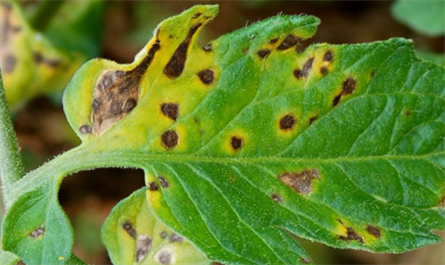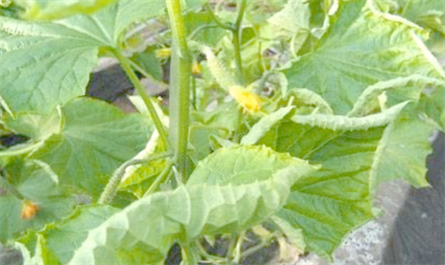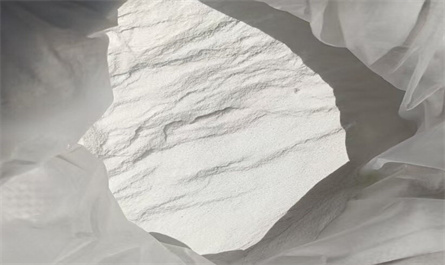Analysis of the risks of using plant growth regulators and various symptoms of pesticide damage
Plant growth regulators play an important role in agricultural production. They can enhance the stress resistance of crops, help increase yields, improve product quality, and thus increase the economic benefits of planting. However, if these regulators are used improperly, they may cause crop pesticide damage, which will have an adverse effect on yield and quality, and even increase production costs. Next, we will explore in depth the symptoms of pesticide damage caused by improper use of 8 common regulators.

Symptoms of pesticide damage of Ethephon
Lighter pesticide damage is manifested as the top of the plant gradually wilting, the lower leaves and flowers, and young fruits begin to turn yellow and fall off, and the residual fruits mature prematurely. Severe pesticide damage is more obvious, the leaves of the whole plant quickly turn yellow and fall off, the fruits also quickly mature and fall off, and eventually the whole plant dies. This kind of pesticide damage is mostly caused by excessive use of Ethephon or improper use time, and will not affect the next crop.

Symptoms of α-Naphthyl Acetic Acid Injury
Mild α-Naphthyl Acetic Acid injury only manifests as a small amount of leaf loss in flowers and young fruits, which has little effect on the overall growth of the plant. However, more severe injury will cause leaf atrophy, petiole flipping, large-scale leaf shedding, and rapid ripening and shedding of fruits. In addition, improper use of α-Naphthyl Acetic Acid during seed soaking may also cause root deformities or failure to seed. It is worth noting that α-Naphthyl Acetic Acid injury may affect some of the next crops, but in most cases it will not.
Symptoms of Triacontanol Injury
In the seedling stage, if the amount used is too large or the purity of Triacontanol is insufficient, it will cause the sheath to bend and the roots to be deformed. For mature plants, it mainly manifests as curling of young leaves.
Symptoms of Diethyl aminoethyl hexanoate (DA-6) injury
After using DA-6, spots will appear on the leaves, which will gradually expand and change from light yellow to dark brown, and finally become transparent. It is worth noting that this symptom of injury only occurs on peach trees, and other crops have not been reported so far.
Mepiquat chloride
After using mepiquat chloride, the leaves of crops will become smaller and thicker, and the internodes will become dense, resulting in the growth of buds. This not only affects the normal growth of the plant, but also may cause a large number of buds to fall off. In crops such as cotton, this symptom of injury may also cause problems of late greed for green and late maturity. However, it is worth noting that mepiquat chloride has relatively few phytotoxic effects on grass plants, and its dosage range is relatively wide. In addition, the phytotoxicity of mepiquat chloride usually does not have adverse effects on the next crop.
Symptoms of Chlormequat Chloride Injury
When crops are affected by Chlormequat Chloride, they will show severe dwarfing, fruit branches cannot stretch normally, leaves are deformed, and supernumerary buds grow in clusters. In addition, the internodes of fruit branches are too short, and the branches and leaves of the plants become fragile and easy to break. If the injury occurs during the soaking process, it will cause the roots to bend, the growth of young leaves will be hindered, the emergence time will be delayed by more than 7 days, and the emergence will be twisted and deformed. It is worth noting that Chlormequat Chloride is more obvious in dicotyledons, while the impact on monocotyledons is relatively small.

Precautions for using plant growth regulators
Strictly follow the method of use and concentration
Do not arbitrarily increase the amount of plant growth regulators or change the concentration of use. The correct approach is to strictly follow the concentration and interval period in the instructions and apply them at the appropriate stage to ensure the normal growth of the plants.
Reasonable preparation
Read the instructions carefully before use and prepare them according to the requirements. Some regulators may not be directly soluble in water, so they need to be prepared into a "mother solution" first and then diluted to the required concentration to ensure uniform mixing and use of the agent.
Correctly understand the role of plant growth regulators
Plant growth regulators must be under sufficient water and fertilizer conditions to exert their significant effects. It is unwise to rely solely on plant growth regulators and ignore conventional agricultural techniques such as fertilization and irrigation, which will affect their use effect.
Be cautious when mixing other agricultural substances
Be cautious when mixing plant growth regulators with other agricultural substances (such as fertilizers, pesticides, etc.). Although they may be mixed for convenience, they must be mixed on the basis of full understanding and testing to ensure that there will be no adverse effects.
Avoid using certain plant growth regulators in seed fields
Plant growth regulators such as Ethephon and Gibberellic Acid are not suitable for crops such as vegetables, cotton, and wheat that are propagated for seed. These agents may increase the number of sterile ears and severely reduce the germination rate of seeds, so they should be used with special caution on these crops.

Symptoms of pesticide damage of Ethephon
Lighter pesticide damage is manifested as the top of the plant gradually wilting, the lower leaves and flowers, and young fruits begin to turn yellow and fall off, and the residual fruits mature prematurely. Severe pesticide damage is more obvious, the leaves of the whole plant quickly turn yellow and fall off, the fruits also quickly mature and fall off, and eventually the whole plant dies. This kind of pesticide damage is mostly caused by excessive use of Ethephon or improper use time, and will not affect the next crop.

Symptoms of α-Naphthyl Acetic Acid Injury
Mild α-Naphthyl Acetic Acid injury only manifests as a small amount of leaf loss in flowers and young fruits, which has little effect on the overall growth of the plant. However, more severe injury will cause leaf atrophy, petiole flipping, large-scale leaf shedding, and rapid ripening and shedding of fruits. In addition, improper use of α-Naphthyl Acetic Acid during seed soaking may also cause root deformities or failure to seed. It is worth noting that α-Naphthyl Acetic Acid injury may affect some of the next crops, but in most cases it will not.
Symptoms of Triacontanol Injury
In the seedling stage, if the amount used is too large or the purity of Triacontanol is insufficient, it will cause the sheath to bend and the roots to be deformed. For mature plants, it mainly manifests as curling of young leaves.
Symptoms of Diethyl aminoethyl hexanoate (DA-6) injury
After using DA-6, spots will appear on the leaves, which will gradually expand and change from light yellow to dark brown, and finally become transparent. It is worth noting that this symptom of injury only occurs on peach trees, and other crops have not been reported so far.
Mepiquat chloride
After using mepiquat chloride, the leaves of crops will become smaller and thicker, and the internodes will become dense, resulting in the growth of buds. This not only affects the normal growth of the plant, but also may cause a large number of buds to fall off. In crops such as cotton, this symptom of injury may also cause problems of late greed for green and late maturity. However, it is worth noting that mepiquat chloride has relatively few phytotoxic effects on grass plants, and its dosage range is relatively wide. In addition, the phytotoxicity of mepiquat chloride usually does not have adverse effects on the next crop.
Symptoms of Chlormequat Chloride Injury
When crops are affected by Chlormequat Chloride, they will show severe dwarfing, fruit branches cannot stretch normally, leaves are deformed, and supernumerary buds grow in clusters. In addition, the internodes of fruit branches are too short, and the branches and leaves of the plants become fragile and easy to break. If the injury occurs during the soaking process, it will cause the roots to bend, the growth of young leaves will be hindered, the emergence time will be delayed by more than 7 days, and the emergence will be twisted and deformed. It is worth noting that Chlormequat Chloride is more obvious in dicotyledons, while the impact on monocotyledons is relatively small.

Precautions for using plant growth regulators
Strictly follow the method of use and concentration
Do not arbitrarily increase the amount of plant growth regulators or change the concentration of use. The correct approach is to strictly follow the concentration and interval period in the instructions and apply them at the appropriate stage to ensure the normal growth of the plants.
Reasonable preparation
Read the instructions carefully before use and prepare them according to the requirements. Some regulators may not be directly soluble in water, so they need to be prepared into a "mother solution" first and then diluted to the required concentration to ensure uniform mixing and use of the agent.
Correctly understand the role of plant growth regulators
Plant growth regulators must be under sufficient water and fertilizer conditions to exert their significant effects. It is unwise to rely solely on plant growth regulators and ignore conventional agricultural techniques such as fertilization and irrigation, which will affect their use effect.
Be cautious when mixing other agricultural substances
Be cautious when mixing plant growth regulators with other agricultural substances (such as fertilizers, pesticides, etc.). Although they may be mixed for convenience, they must be mixed on the basis of full understanding and testing to ensure that there will be no adverse effects.
Avoid using certain plant growth regulators in seed fields
Plant growth regulators such as Ethephon and Gibberellic Acid are not suitable for crops such as vegetables, cotton, and wheat that are propagated for seed. These agents may increase the number of sterile ears and severely reduce the germination rate of seeds, so they should be used with special caution on these crops.
RECENT POSTS
-
Choline chloride can increase the yield of root and tuber crops by more than 30%.
-
Effects and Application Methods of 2% Benzylaminopurine + 0.1% Triacontanol Compound in Rice
-
How to Enhance Fertilizer Efficiency Using Plant Growth Regulators?
-
6-Benzylaminopurine 6-BA has a significant preservative effect on fruits and vegetables after harvest
Featured News



